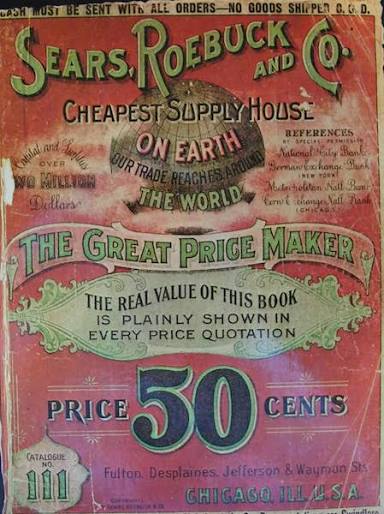Exploring the Sears and Roebuck Catalog: A Treasure Trove of Necessities for Plain Living

In the bustling world of the late 19th and early 20th centuries—where life was simpler yet brimming with challenges—the Sears and Roebuck catalog emerged as a beacon of convenience and possibility. Catering to the needs of common folk, particularly those in rural areas, this catalog was more than just a list of goods. It became a lifeline for people seeking household essentials, farm equipment, and even the promise of a new home. Today, we delve into the pages of this iconic catalog to explore its offerings and understand its profound significance in the lives of ordinary Americans.
In an era marked by limited access to resources and the necessity of ingenuity, the Sears and Roebuck catalog offered a comprehensive selection of products to meet the diverse needs of its customers. From water pumps and windmills to house kits and household goods, it provided practical solutions to everyday challenges. For farmers and homesteaders, the availability of windmills meant reliable water sources, essential for irrigation, livestock, and household use. Similarly, house kits gave families an affordable and customizable path to home ownership, enabling them to build sturdy and comfortable abodes that reflected their aspirations.
In rural communities, where neighbors depended on one another for support, the Sears catalog served as more than a shopping guide. It symbolized the spirit of cooperation and mutual aid. Farmers often gathered to discuss the catalog’s latest offerings, exchanging tips on selecting the best tools or maximizing crop yields. During times of need, neighbors banded together to assemble house kits or install windmills, fostering a sense of camaraderie and goodwill that defined the essence of rural life.
For families striving for self-sufficiency, the Sears catalog was an indispensable resource. It provided garden tools, seeds, canning supplies, and kitchen gadgets—everything required to cultivate abundant harvests and preserve the fruits of labor for leaner months. The sections on water bath canning and jelly-making were particularly valuable, offering homemakers practical guidance for extending the shelf life of their produce and creating delicious preserves to enjoy year-round.
As we turn the pages of the Sears catalog, we are reminded of the timeless love story of Grace and Zach. Their journey from strangers to soulmates mirrors the hopes and dreams of countless Americans during that era. Bound by circumstance and united by resilience, Grace and Zach find solace and strength in each other as they navigate the demands of rural life. From their humble beginnings on a farm to their eventual declaration of love, their story reflects the enduring power of love and the simple pleasures of a life well-lived—a tale as rich and inspiring as the catalog itself.
Reflecting on the legacy of the Sears and Roebuck catalog, we recognize its enduring impact on American life and culture. From its modest beginnings as a mail-order pamphlet to its status as a cultural icon, the catalog inspired generations with its message of possibility and progress. Through its practical offerings and its reflection of everyday life, the Sears catalog became a testament to the ingenuity and resilience of the American spirit. It reminds us that even in the face of adversity, there is always a path forward.

